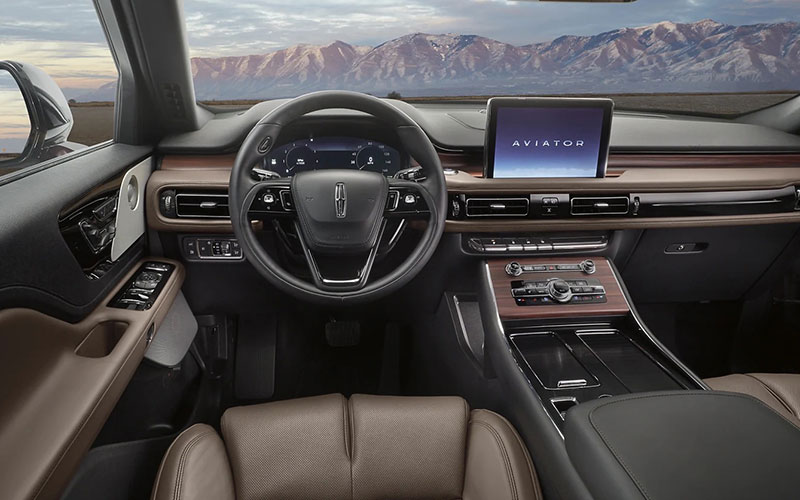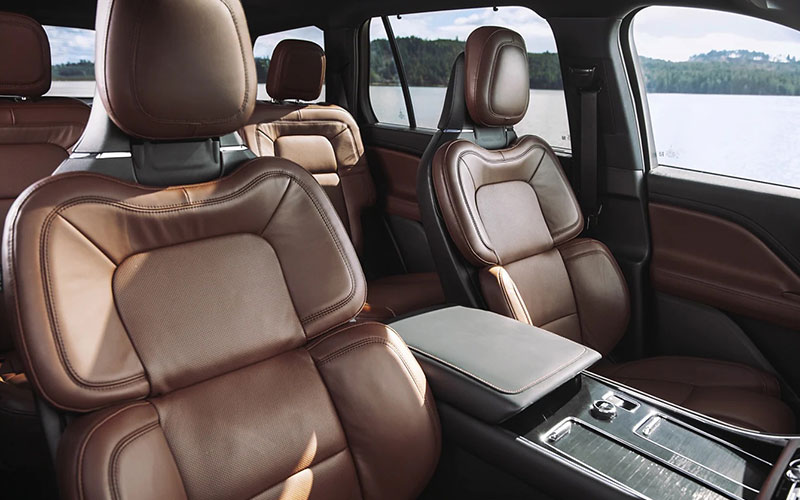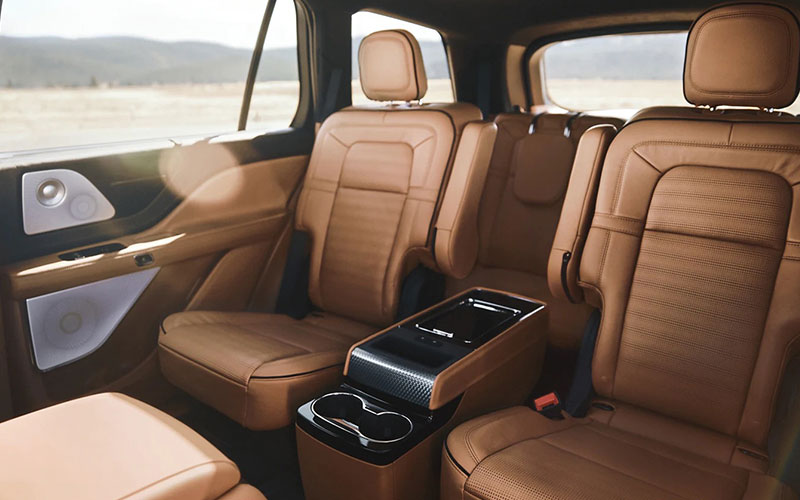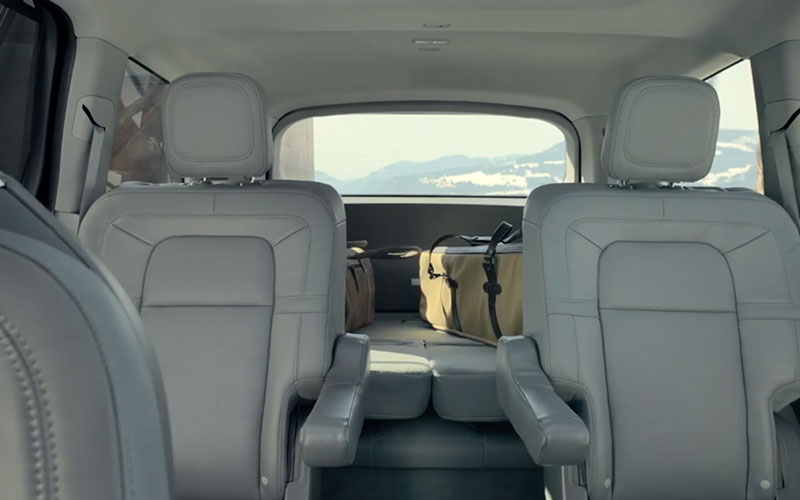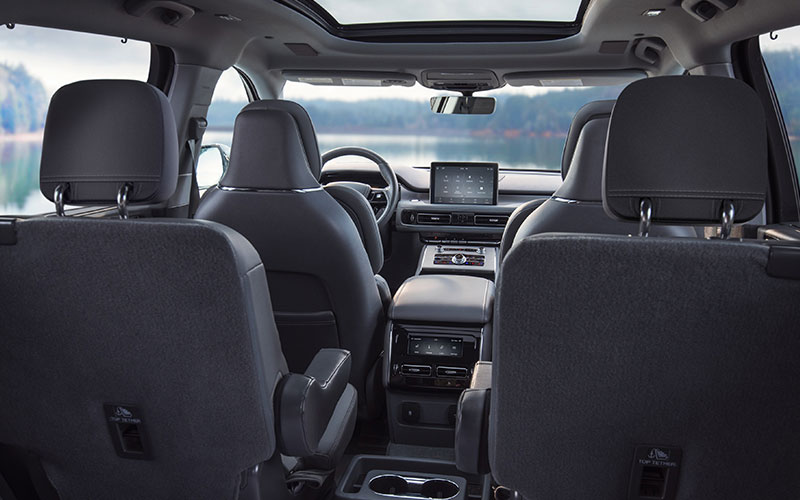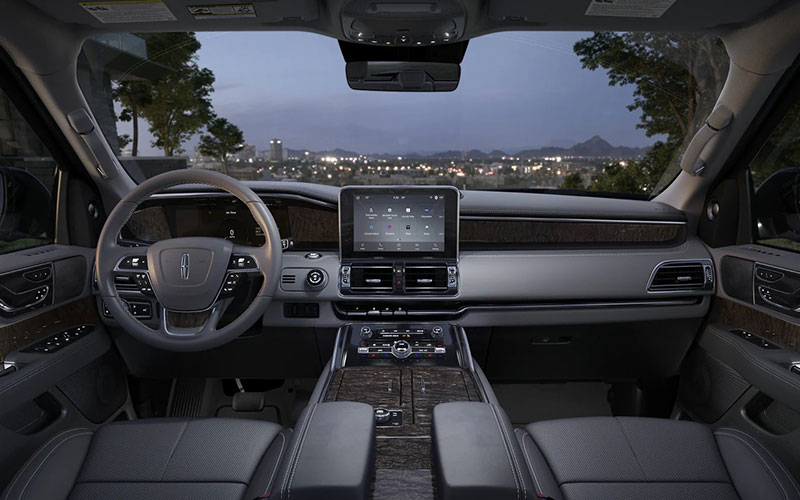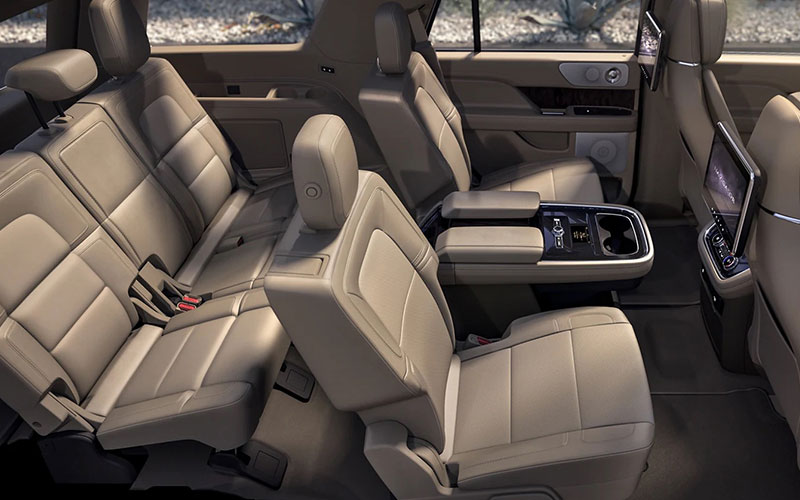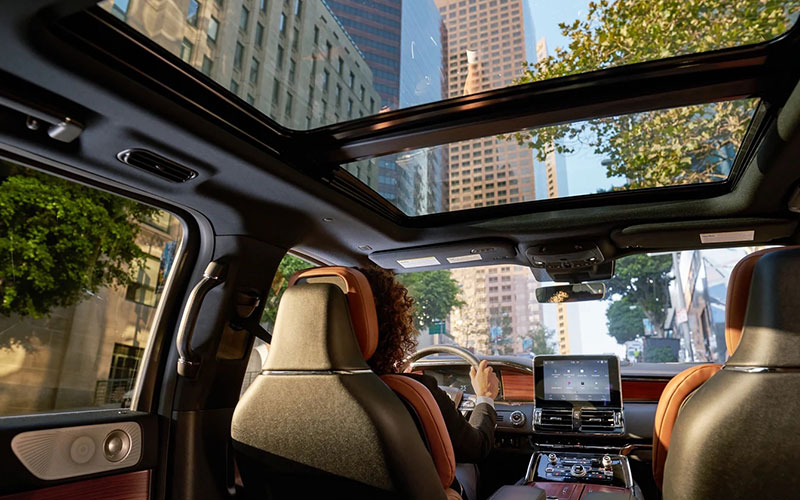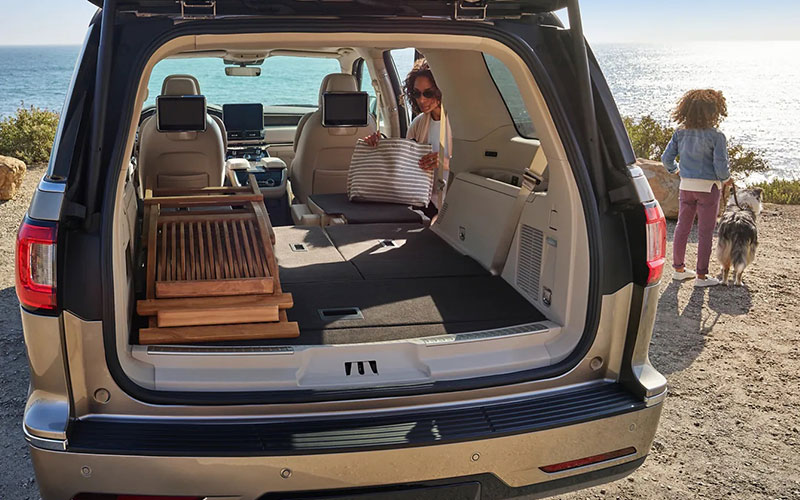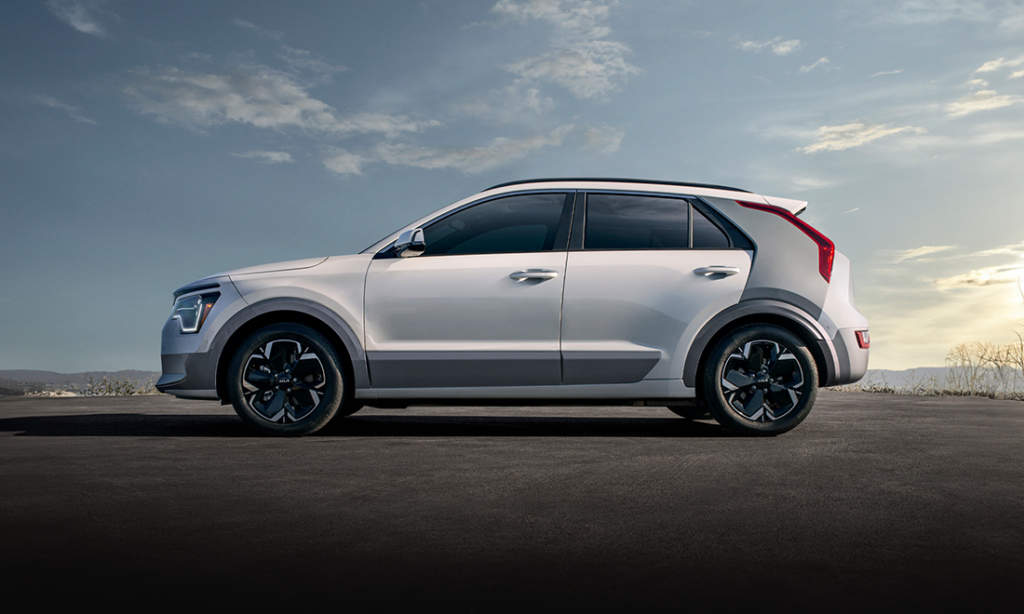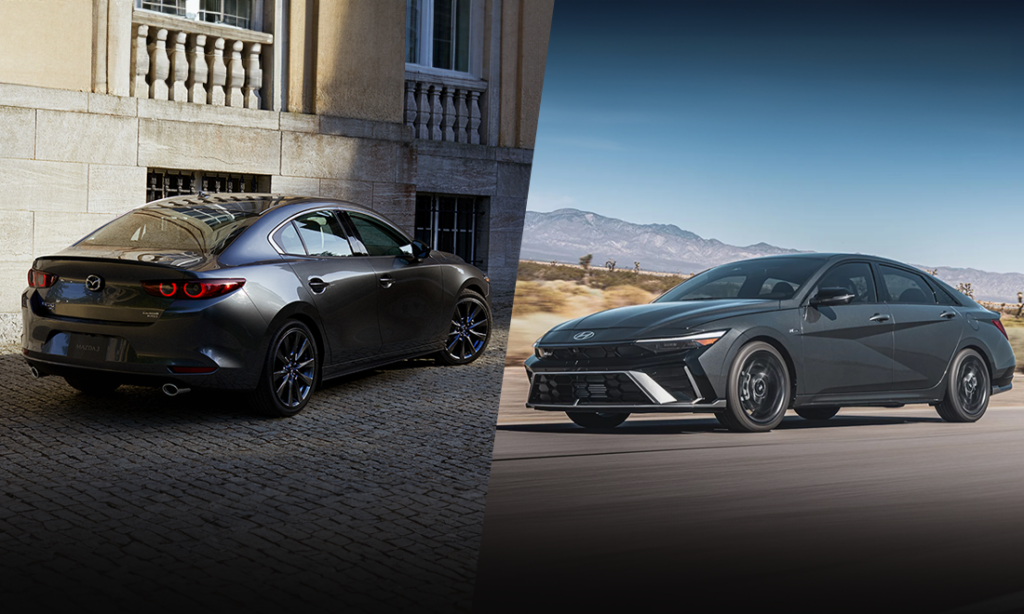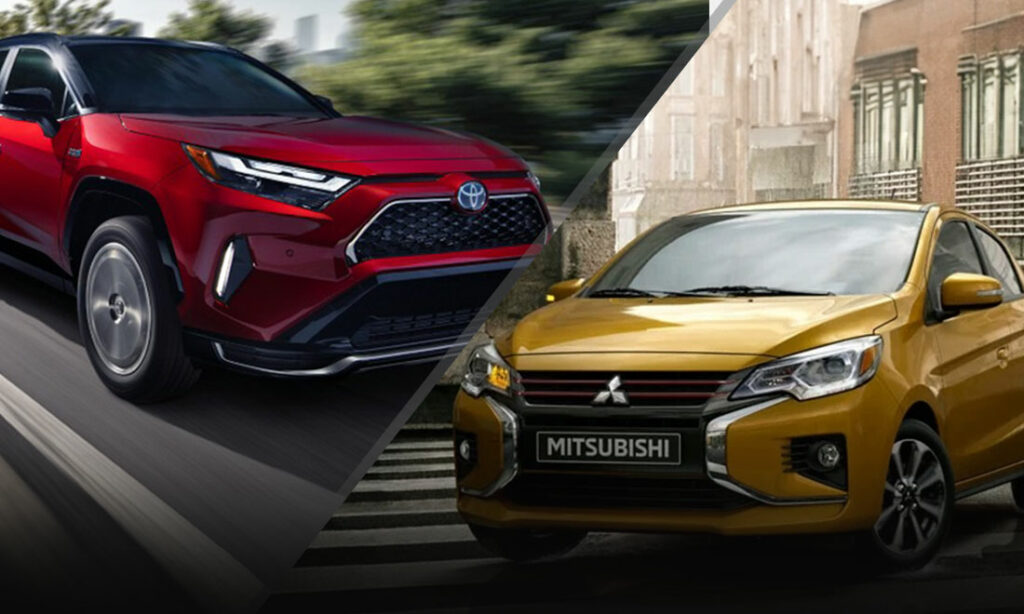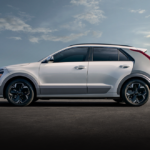2021 Lincoln Aviator vs Lincoln Navigator
The 2021 Lincoln Aviator and Lincoln Navigator are luxury laden but at dramatically different price points, and size. Let’s see which one does SUV luxury best.
Lincoln’s Luxury SUVs
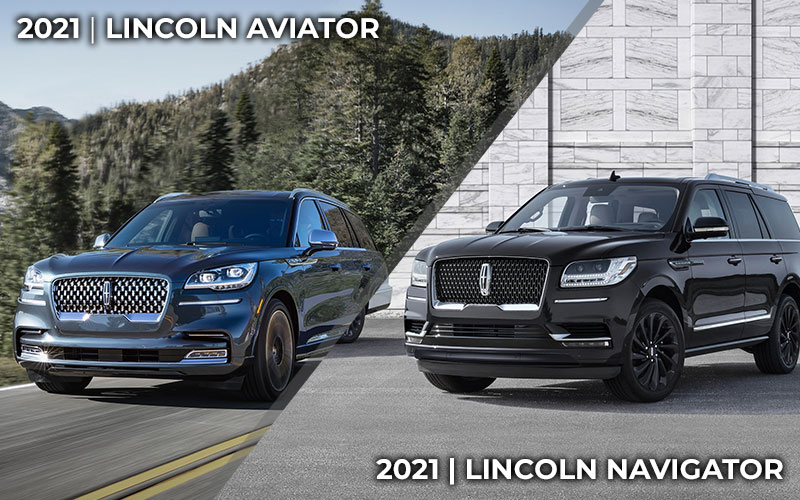
If you’re in the market for a full-size luxury SUV, the 2021 Lincoln Aviator is a good starting point. It offers a range of price points, plenty of luxury, and baby-Navigator looks. But perhaps you have a gaggle of children and are thinking the land-yacht segment of vehicles is more your speed. In that case, Lincoln’s actual Navigator would be on your radar. It also piles on the high-life amenities and comes in size Huge or Extra Huge. There is some pricing overlap between a tricked-out Aviator and base 2021 Navigator. So, let’s take a look at how these two similar looking SUVs from Lincoln compare.
2021 Lincoln Aviator vs Lincon Navigator Specs
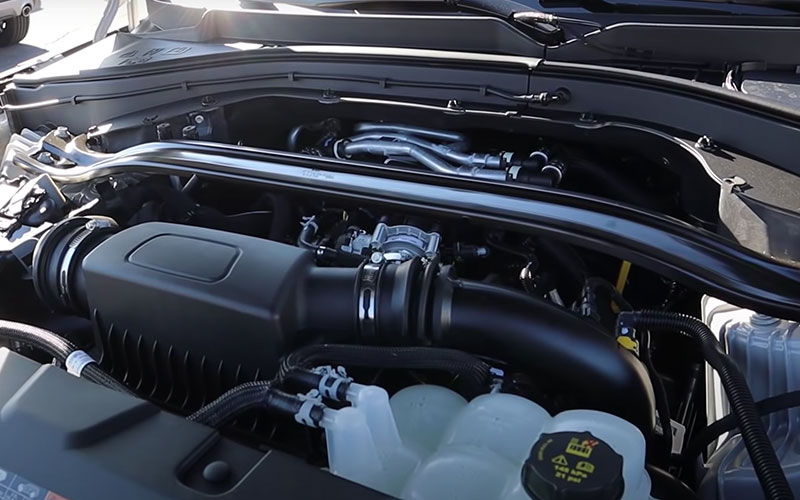
The Explorer-based, 2021 Lincoln Aviator is a 16 ½’ cruiser with over three feet of second row legroom and a third row, making 7-passenger seating an option. If you flip that third row down, 42 cubic feet of storage opens up versus 18 cubes with the third row raised.
Though it weighs in at around 5,000 pounds, the Aviator will get up and go thanks to a standard, twin-turbocharged V6 motor making an even 400 horsepower and 415 lb-ft of torque. A 10-speed automatic puts the power to the rear wheels or, optionally, all four corners.
Lincoln also offers a mildly hybridized Aviator that adds a battery-powered motor, bringing total system output to just under 500 horses and 630 lb-ft of torque. If towing is on the list, the Aviator can pull up to 6,700 pounds depending on configuration.
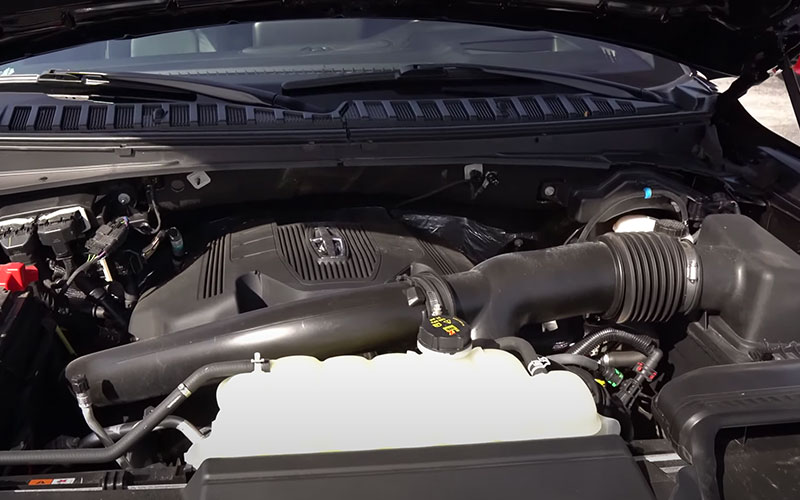
The 2021 Lincoln Navigator features a larger displacement EcoBoost V6 producing 450 hp and 510 lb-ft of twist paired to the same 10-speed transmission. That’s a lot of power, but considering the Navigator can weigh in at 3 tons, it needs it. Rear-wheel drive is standard, but you can opt for a 4×4 Navigator and a towing package that allows for 8,700 pounds of trailering capacity.
The “regular” size Navigator is 210” long while the L version stretches another 12” which is close to 19-feet overall. In that extra-long setup, the 41” of third row legroom is greater than the Aviator’s second row dimension. Versus the Aviator, the Navigator is 12” wider and 6” taller. So, if you want all the space, look no further.
Driving & Performance
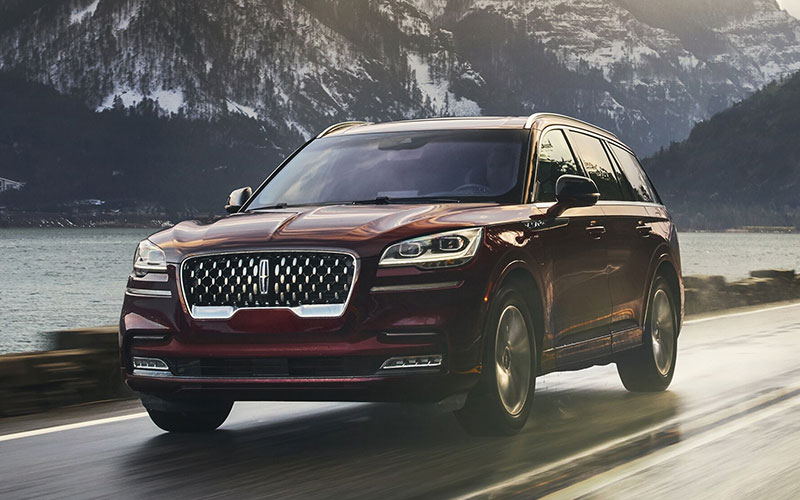
Both Lincoln SUVs offer beefy, twin-turbo power plants with enough juice to move their bulk around quickly. Adaptive suspension is also on tap with both SUVs, but its lineup standard equipment on the Navigator versus top-spec only on the Aviator. Interestingly, the Aviator incorporates air springs into that equation while the Navigator does not. In any case, beware of the 22” rims you can find on both trucklets as they can result in a punishing ride.
Drivers in either SUV can select a drive mode – like Excite or Deep Conditions – based on preferred driving style and real-time road conditions. Silly naming conventions aside, these modes will modify suspension, steering, and throttle tuning accordingly. Nighttime driving is made easier with steering-responsive LED headlights, a feature that is included on all 2021 Navigators, but requires higher trim levels on the Aviator.
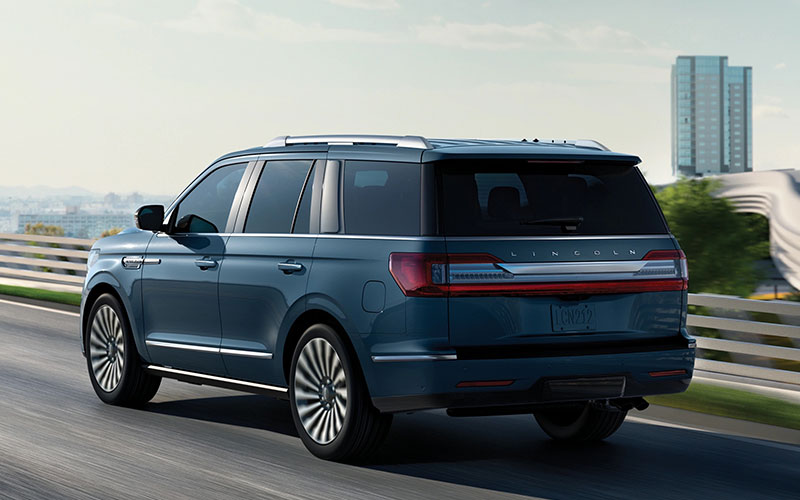
Lincoln includes active front-grille shutters on both the Aviator and Navigator along with automatic idle start/stop tech. However, these are heavy vehicles, so fuel economy is not their forte. The Aviator is estimated to achieve 18 mpg in the city and 26 mpg on the highway in two-wheel drive form, with the regular gas motor.
You’ll need a Grand Touring model to use the hybrid engine, but it does allow for up to 21 miles of electric-only propulsion and MPGe figures of 54/58 for city/highway driving. Though the Navigator forgoes a V8, it’s still packing a monster motor, so the EPA estimates 16 mpg around town and 22 mpg on the highway – if you can keep your foot out of it.
Comfort & Interior
Power-adjustable, leather-swaddled seating is the name of the game for Lincoln’s two biggest SUVs. Base 2021 Lincoln Aviator’s offer 10-way adjustability while the top-spec Black Label has a ludicrous 30 areas of adjustment that includes a power thigh extender, not to mention massaging capability. Lincoln names these thrones “Perfect Position” and the Navigator follows suit.
Middle row occupants have the ability to slide forward and back while third row folk can ease into a few degrees of recline. Both vehicles offer heated and ventilated seats in the first two rows, but only the Aviator features quadruple-zoned climate control. The Navigator has to make do with “only” three zones.
Vehicle mirrors have gotten a lot more attention lately, as evidenced by the exterior versions on the Aviator. They have power-operated folding ability, a heating element, LED turn signals, and auto-dimming glass. The Navigator offers the same multipurpose mirrors outside plus the elegant, frameless rearview that also reduces rearward glare by automatically dimming itself.
Ambient lighting, a panoramic sunroof, and acoustic front glass further the cushy interior vibe of the Aviator and Navigator. But the Navigator takes it, literally, a step further upon exit with illuminated, power-deployable running boards. Other niceties on the bigger SUV, not found on the Aviator, are open-pore wood trim, a variety of coat hooks, and even illuminated belt buckles in the first two rows.
2021 Lincoln Aviator vs Lincon Navigator Trims & Features
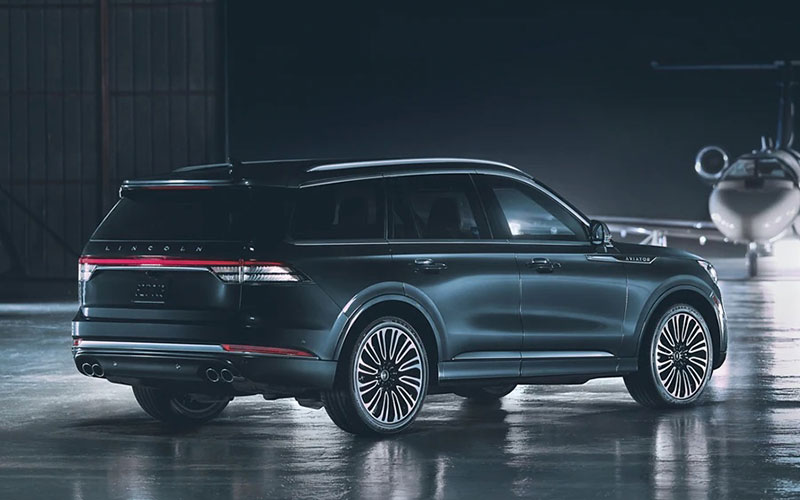
The 2021 Lincoln Aviator starts at $52,665 for Standard trim and comes quite loaded with the Co-Pilot360 suite of active safety aids, 19” wheels, and a 10” touchscreen infotainment interface. Stepping up to the Reserve costs $58,660 and adds a 360-degree exterior camera view, 20” rims and hands-free liftgate. The $70,640 Grand Touring model brings the hybrid engine, AWD, 21” alloys, and active noise control.
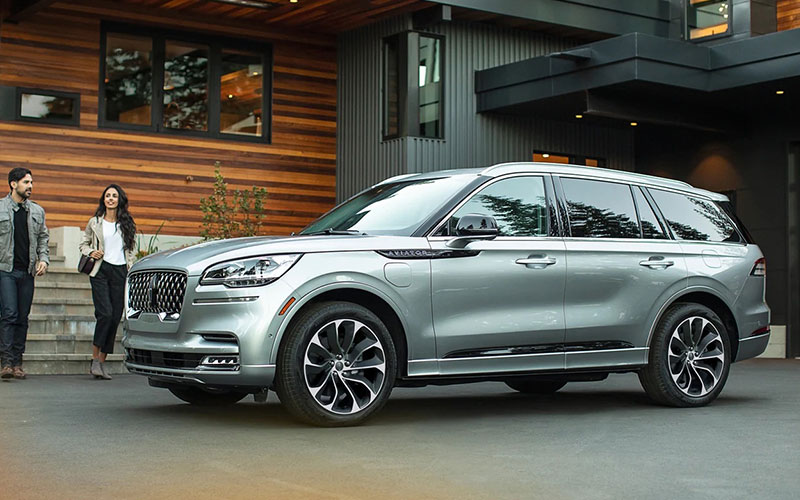
Black Label trim on the Aviator starts at about $80,000. It beefs up the driver-assistance features, sits on 22” wheels, and includes adaptive front lighting. Plus, there’s the Revel audio system with a whopping 28 speakers. Sitting atop this trim tree is the $90,080 Black Label Grand Touring that blends the hybrid powertrain with Black Label amenities like soft-close doors, Savannah leather, 30-way seats, plus the air-damped, adaptive suspension.
The 2021 Aviator appears to hold its value. A year-old Reserve model with two-wheel drive and 27,000 miles can be found for about $55,000. Which is only a few thousand dollars less than a brand-new one.
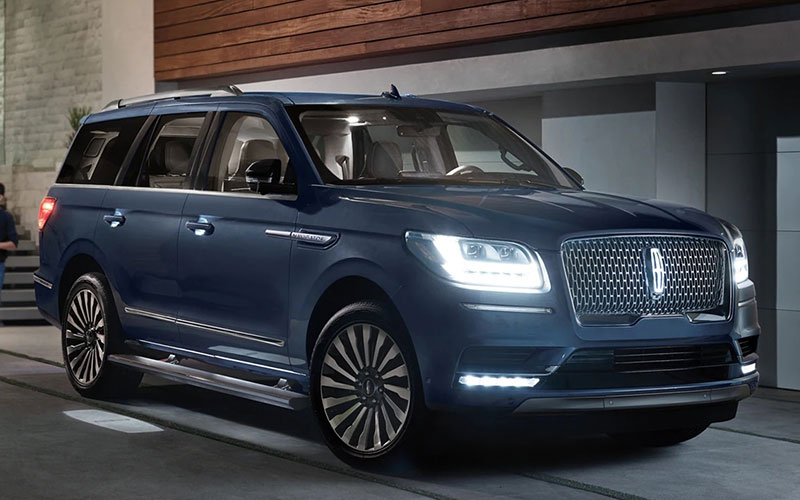
A 2021 Lincoln Navigator Standard starts at $78,000 and includes the same array of driver aids as the Aviator, like lane keeping assist and pre-collision assist with automatic emergency braking. A hands-free liftgate, adaptive headlights, Wi-Fi hotspot, and 10” central touchscreen interface are all included here.
The Navigator Reserve runs $83,785 or $87,010 for long wheelbase models. In both versions, 22” wheels and power-deployable running boards grace the exterior, while adaptive cruise control, the panoramic Vista Roof, and active parking assist are added.
Black Label Navigators are also available in standard length for $99,950 or size XL for $103,150. For that money, the laundry list of amenities includes four-wheel drive, a heads-up display, and massaging seats. The Revel Ultima stereo actually has fewer speakers than top-tier Aviator systems, but there are still 20 different components ensuring concert hall quality.
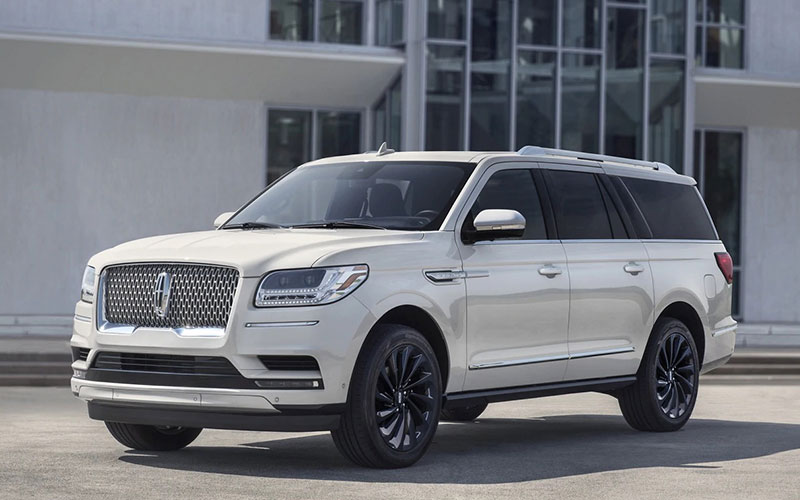
Like the 2021 Aviator, a new Navigator doesn’t show dramatic one-year depreciation. A 2020 Reserve model with 4WD and 23,000 miles on the odometer runs about $85,000. Comparably equipped, a 2021 Navigator stickers for $87,105.
Worth noting is that Black Label trim, on both vehicles, brings with it 4 years or 50,000 miles of complimentary maintenance that includes pickup and delivery service.
So, Aviator or Navigator?
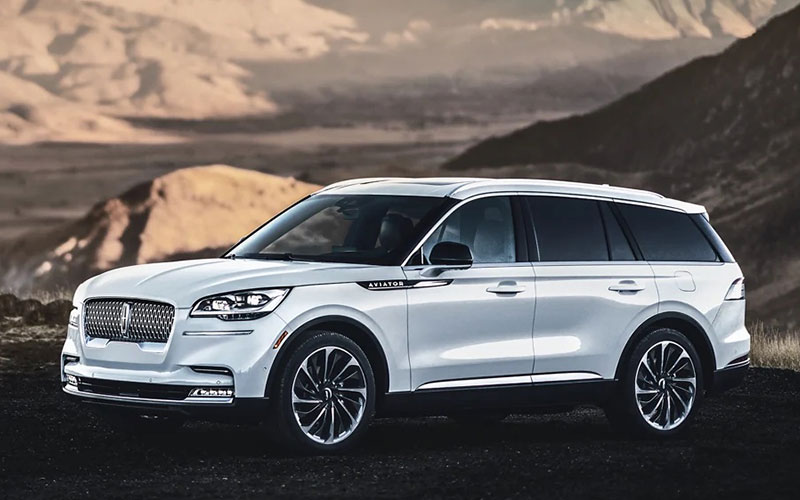
The 2021 Lincoln Aviator is a compelling, full-size luxury SUV. With an entry point under $55,000, you get handsome looks, a luxurious cabin and too many features to list here. For a family of four, the Aviator should make you feel properly posh. However, there is a certain appeal to the massive, long-wheelbase 2021 Lincoln Navigator. It has PRESENCE. Navigating the Whole Foods parking lot is sure to be a nightmare, but just think how many bags of groceries you can stuff in the back!
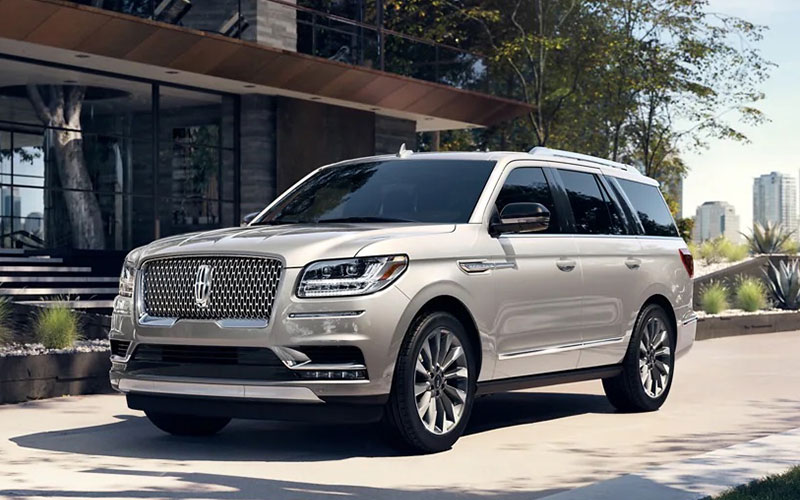
If price is no object and you want to drive the biggest bruiser on the block, a 2021 Lincoln Navigator is for you. It will definitely not leave you wanting for luxury, or a comfy backside. But the 2021 Lincoln Aviator should get the same job done, for most people, and for a whole lot less money.


